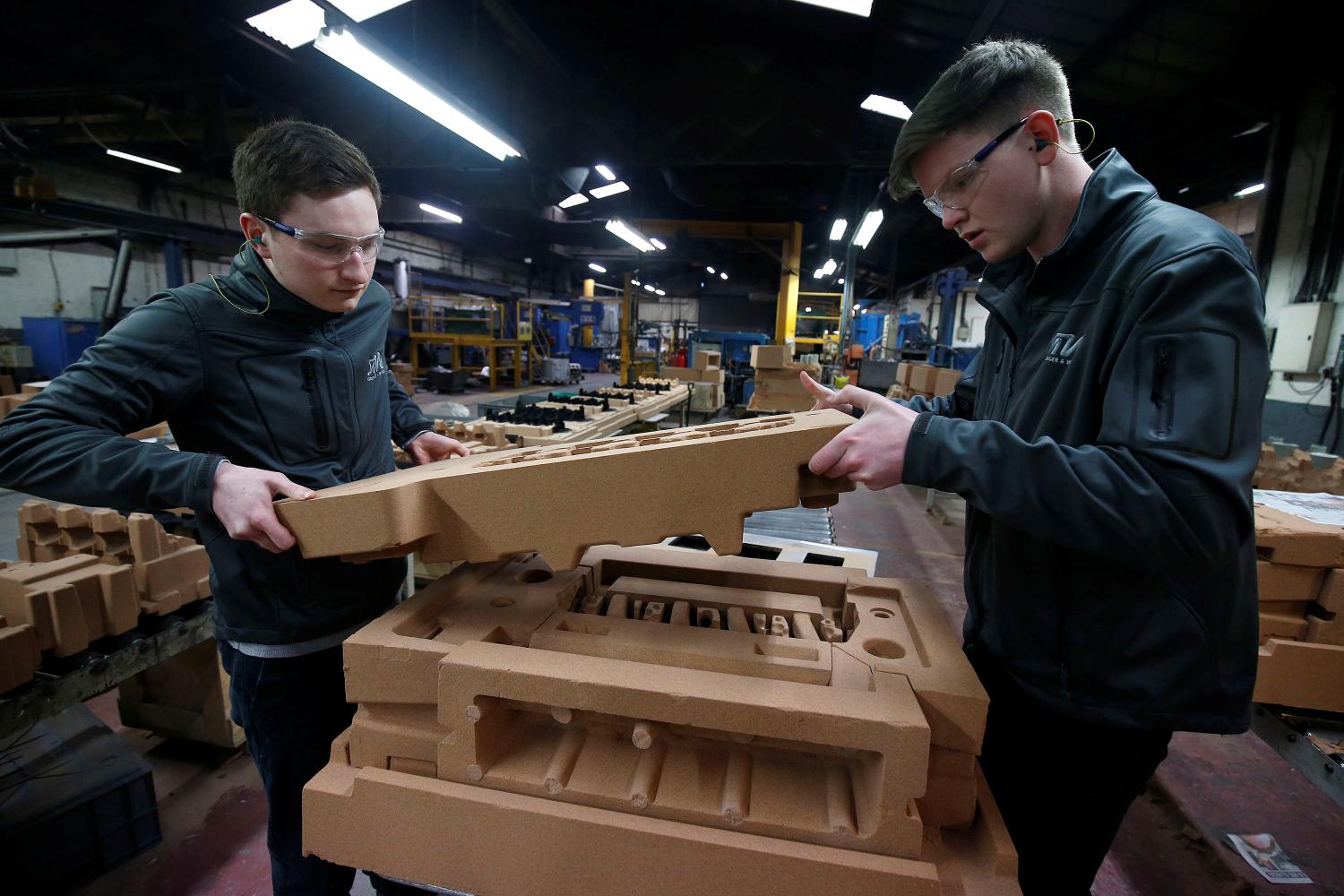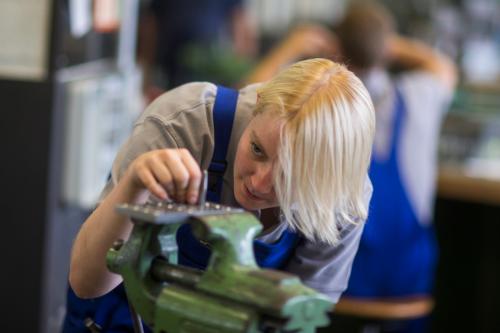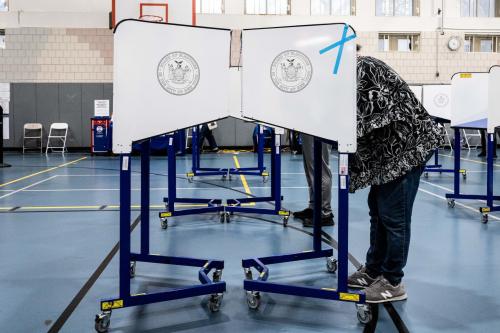Donald Trump is the latest in a long line of presidents to announce ambitious plans to slash the cost of college and create millions of new apprenticeships. But, as I argue in a forthcoming history on the 19th-century origins of student debt, American students have repeatedly rejected attempts to mainstream vocational education for over a century because ‘career courses’ often preclude them from aspirational jobs in technology, finance, law, and medicine.
If Americans are to embrace apprenticeships, I believe coveted Silicon Valley companies, financial institutions, hospitals, and law firms must hire graduates who train outside of full-time academic programs.
Indeed, the director of Georgetown’s Center on Education and the Workforce, Anthony Carneval, doubts that Donald Trump can meet his apprenticeship goal given that “the model in America is ‘high school to Harvard.’”
At one time, America’s most celebrated citizens trained entirely outside of college, such as Abraham Lincoln, who studied to be a lawyer with the help of local attorney offices. But, as college became the default path to top professions in the 20th century, apprenticeships fell out of favor with America’s upwardly mobile culture.
In order to understand a way forward, I think it helps to understand that it’s possible for a country to have a system of apprenticeships for all types of careers and also investigate the historical reasons why American high skill professions shifted away from apprenticeships in the first place.
The uniqueness of Switzerland’s elite apprenticeship system
There’s an important reason why apprenticeships are becoming a priority for so many leading policymakers: They have the potential to expand access to skills training for high-demand occupations and simultaneously ease student debt. Switzerland, for instance, is hailed as the “gold standard” of vocational learning, where roughly two thirds of higher education students work and learn at the same time, graduating with little to no debt.
Though many countries have popular apprentice systems, Stanford Economics Professor Eric Hanusek finds that among all European nations, Swiss students end up earning the most compared to their university-bound peers. This is why Colorado Gov. John Hickenlooper is basing a new statewide initiative for high schoolers explicitly on the Swiss model.
Experts tell me that Switzerland’s apprenticeship system is unique in its ability to be a career path for the most prestigious careers. One of the directors of IBM’s Zurich manufacturing lab, where they design things like next-generation supercomputers, told me that he prefers a mix of apprentices and academically trained students. This particular IBM manager holds a Ph.D. in biochemistry and started out as an apprentice himself. IBM’s lab could hire from the top universities in Europe, yet chooses at least half to come from Switzerland’s unique work-and-learn background.
But, this begs the question: If apprenticeships can be so great, why did America abandon them in the first place?
Why America turned away from apprenticeships
The fall of American apprenticeships began as a political compromise between labor unions and business executives over how much to pay young workers-in-training after the industrial revolution.
“From the introduction of the first labor-saving machine dates the decline of the apprentice,” hailed a report from the Massachusetts Bureau of Statistics of Labor in 1907. Industrial machines made it even easier to replace skilled craftsmen with lots of cheap green-horn apprentices, who could easily perform routine assembly line work.
At a impasse, labor and business lobbied policymakers to shoulder taxpayers with the burden of job training—a burden the government happily accepted with the passage of the historic Smith-Hughes Act of 1917, opening up a new federal role in funding workforce development and vocational high schools.
Yet, by 1926, one disappointed report from influential educator George Counts explained that the new federally supported career courses were a flop. “As the movement toward vocational education got underway, it manifested such strength that many expected the industrial arts rapidly to assume a position of dominance in the high-school curriculum. This expectation has not been fulfilled. … The industrial arts were shown … to play a relatively humble role in the curriculum,” he wrote.
America’s upwardly mobile, working-class families flat out rejected any second-tier vocational track that presumed their children should not even attempt to go to Yale or Harvard.
But, if career training was so needed, why didn’t the Ivy League create the best job preparation courses in the country?
Academics fight college-as-job-preparation and take over professional schools
America’s uniquely expansive system of higher education was never designed for job preparation; the small colleges that dotted the frontier landscape existed to train citizens for leadership in the upper-crust of society, whether as local clergy, finishing school for young women, and politics for the male bourgeois who attended elite universities.
Academics believed they should train leaders of the republic, not be blue-collar career coaches.
“The whole American public may never be civilized; but America’s contribution to civilization depends not on the whole public, but upon a gifted, earnest, and agglutinated minority,” wrote educator Abraham Flexner, who is widely credited for his influence on the medical school system. “The pursuit of science and scholarship belongs to the university.”
Colleges teamed up with professional schools in law, medicine, engineering and management to create an “undergraduate” and “graduate” track, while pressing states to require academic degrees for new occupational licenses.
Law degrees today reflect the outcome of this once ambitious effort. Only a handful of states permit law apprentices to sit for the bar exam without having gone to an American Bar Association-accredited school. In Virginia, apprentices cannot earn money from their supervising attorney.
College associations have fought to maintain full-time academic degrees as the first step toward aspirational careers—whether in law, medicine, or other professional occupations—for over a century, successfully relegating apprenticeships to less prestigious careers.
Failed attempts repeat history
Modern attempts to bring back vocational education have tended to fail for the same reasons they did in the early 20th century.
In 1992, a bold “school-to-work” initiative by then-candidate Bill Clinton eventually got watered down by labor unions in the legislative process because labor wanted to maintain its historic influence over regulated apprentices. “Unions generally opposed youth apprenticeship, because they might lose control over registered apprenticeship programs,” writes American University’s Robert Lerman in an autopsy of Clinton’s initiative.
In 2012, President Barack Obama tried to reform universities by ranking schools based on the labor market outcomes of their graduates. The ill-fated attempt was successfully fought by trade groups, with the American Association of University Professors claiming that college was about “creating better human beings” and should not be judged by their students’ income.
There is reason for optimism, since aspirational work-and-learn opportunities do exist in America; for instance, top tech firms have an extensive paid internship program for promising young students, who often begin working at the same age as their Swiss counterparts.
And, after years of public pressure from law students, the American Bar Association has recently eased rules banning pay for internships.
Thus, the infrastructure for aspirational work-and-learn exists, but nothing short of seismic shifts in college loan criteria, training regulations, hiring standards, and licensing rules will undo a century’s worth of incentives toward full-time academic degrees.





